Breadmaking is an art form, with each culture, household, and individual bringing unique techniques and stories to the process. The energy and care put into shaping the dough are transferred into each loaf, linking you to generations of ancestors who have spent lifetimes transforming ancient grains into bread.
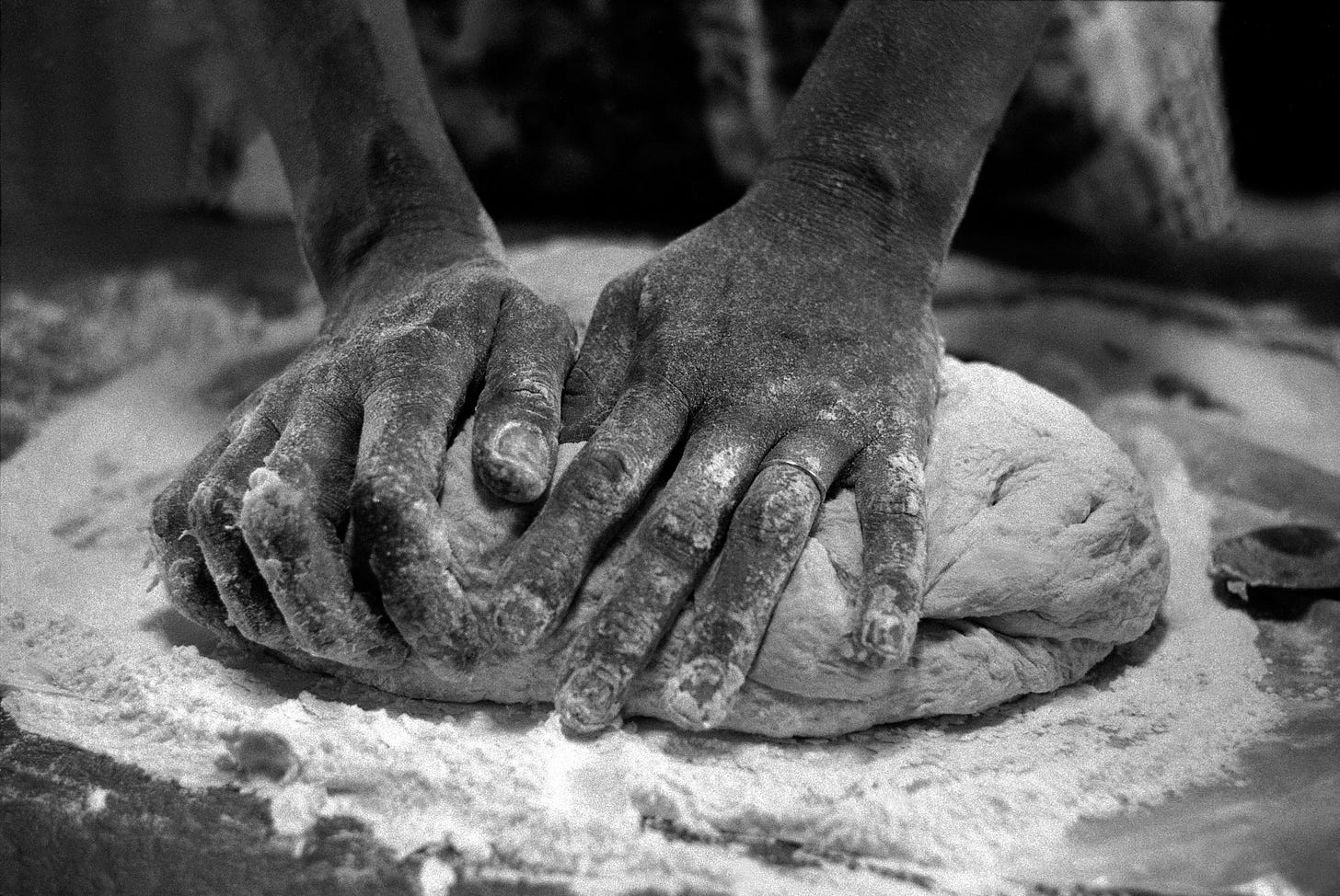
Ancient grains are derived from ancient civilizations. These grains are left unaltered and not genetically modified. Ancient grains like spelt, khorasan, einkorn, and emmer are becoming better known more recently. However, the majority of the grain we consume today in the United States have been altered from this ancient form. Wheat, for instance, has not yet been genetically engineered, but it has been altered through its breeding. This offers a higher yield and causes the plants to grow shorter, more uniform, and disease-resistant. This altering also modifies the proteins and starches in the kernel which is the part we consume. These modifications can cause reactions for some who consume gluten-containing products. Therefore many have decided to avoid gluten altogether. This avoidance of gluten has benefited many and offered more options to those who live with Celiac Disease.
With this shift to eating gluten-free and a hope that the ancient grains of our ancestors will someday return, we carry the ritual from seed to table in a different manner. With many gluten-free options available to us, it is important to remember that gluten-free does not necessarily mean better for you. Instead of purchasing more shelf-stable options, we can turn to the recipes of our ancestors and choose ingredients that nourish us. Making sure that organic ingredients are used and that we can weave the ancient practices into each item we consume. Bread, something as ancient as time, is one of the ways we can nourish ourselves with these gluten-free shifts. Especially sourdough.
Sourdough history goes back thousands of years and helps root the alchemical beauty of fermentation deep within many cultures. Before commercial yeast was used, fermentation was the way bread was made. From the flatbreads of ancient Egypt, all the way to the modern sourdough we eat today.
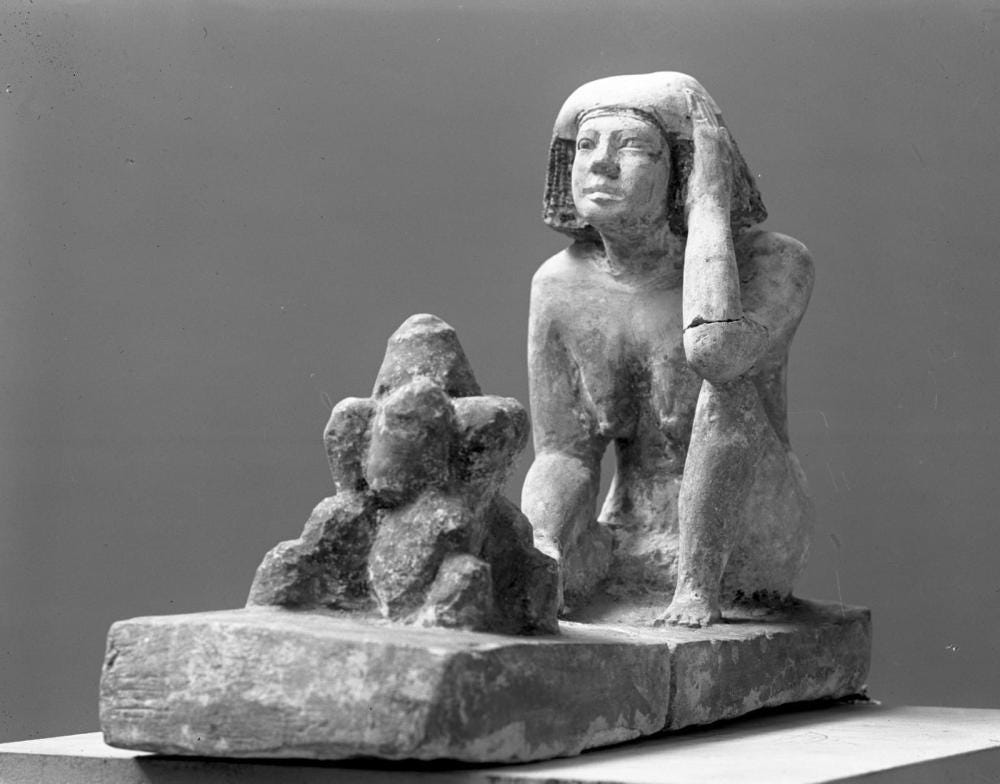
The earliest known form of sourdough dates back to Egypt around 3000 BC, though evidence of fermented bread extends as far back as 5,000 years and likely even earlier. This discovery in Egypt was likely accidental, occurring when bread dough was left out and was naturally colonized by wild yeast spores. This technique was later adopted by the Ancient Greeks and Romans around 800 BC, coinciding with advancements in oven-building.
Breadmaking saw a decline between 300 and 700 AD but experienced a resurgence in the 1100s when the profession of baking emerged in France. During this time, Northern Europe began using barm as a substitute for sourdough leavening. In the mid-1800s, Louis Pasteur’s discovery of commercial yeast reduced reliance on wild yeast and sourdough starters. However, sourdough experienced a revival in 1849 when gold miners during the California Gold Rush popularized the term 'sourdough,' referring to the starters they carried to bake bread. Even though this art form of bread making had been used for thousands of years, it now had a name.
Bread has a rich historical connection to rituals such as Lammas (or Loaf-Mass), celebrated on August 1st to honor the grain harvest. A successful harvest ensured families could bake and store bread for winter, which was vital for survival. Bread also holds deep symbolic meaning, representing death and rebirth. For instance, in the Sumerian myth of Tammuz, his death caused his lover Ishtar to mourn, halting nature’s growth and the grain harvest. Ishtar’s journey to the underworld to bring him back restored both his life and the grain’s growth, symbolizing cycles of death and renewal. This theme is echoed in the Greek myth of Demeter and Persephone, where Persephone’s descent and return mark the changing seasons. Similarly, Slavic cultures perform Marzanna rituals, where an effigy made from grain, straw, or fabric is crafted to symbolize winter’s end. On the designated day, often with the participation of schoolchildren and villagers, the effigy is either drowned in a local waterway or burned, symbolizing the transition to spring.

The cultures mentioned above associate rituals, traditions, and stories with bread, but it's also important to create your own personal rituals. Kneading can be more than a physical process—it can become an opportunity to infuse the dough with positive energy and wellness. This begins with ensuring hands are clean, intentions are pure, and the mind is calm. As the dough is kneaded and folded, focus can be placed on channeling wellness and positivity into each loaf. This is what makes homemade bread special: it is not just about using quality ingredients but also about nourishing loved ones with care, thoughts, and intentions.
Below is a detailed gluten-free sourdough tutorial, complete with all the resources you need to get started. Remember that adjustments may be made for you to find the perfect loaf and that this is normal. Bread is often a two-day process: the evening before is when the fermentation begins, and the next day the bread is baked. This time will be spent in the home, near the oven, with care and attention given to the process. This is a great time to take a break from the modern world to reflect.
Stay tuned for a future post where I will share a traditional organic sourdough recipe for those who do not follow a gluten-free diet.
Tools Needed Before Beginning
Sourdough Starter Kit or Mason Jar
High-Temperature Baking Gloves
Baking Timeline
This is an example of a baking schedule. The times can be adjusted based on your conditions. Keep in mind that room temperature and weather can affect the baking process, and ensure your starter is at its peak activation before you begin.
8:00 pm: Once your starter is at its peak, it is time to mix your preferment. Once mixed, cover the preferment bowl with a tea cloth or paper towel and let ferment overnight.
8:00 am: Mix and prepare your bread. Once the dough is mixed, place it into your proofing basket and allow it to rise for three hours.
10:00 am: Preheat your oven to 425°F with the Dutch oven inside an hour before ready to bake.
10:55 am (or whenever your bread is fully proofed): carefully flip your proofed bread out onto a sheet of parchment paper and score your bread with your bread lame.
11:00 am: Carefully remove your pre-heated Dutch oven from the oven and lower your bread inside — making sure to place the lid back on. Be very careful not to drop it in, this will deflate the bubbles that make sourdough famous. Once the bread is placed inside, put the covered Dutch oven back into the oven and set a timer for 44 minutes.
11:45 am: After baking for 44 minutes, quickly and carefully remove the lid from the Dutch oven and place it back into the oven. Set the timer for another 22 minutes and bake with the cover off.
12:30 pm: After 22 minutes, check the bread to see if it needs more time. This will depend on your oven and can be anywhere from 10-15 minutes if needed. Bake until the bread is golden brown on top. When you remove the bread from the Dutch oven, you can check by tapping or knocking on the bottom. If it sounds hollow—it’s done.
Preferment
150g active gluten-free sourdough starter at peak activity
100g filtered water
80g superfine organic brown rice flour
Liquids
20g organic maple syrup or honey
300g filtered water adjust as needed to prevent gumminess
20g whole psyllium husk not powdered
Flour mixture
80g organic potato starch, please make sure not to use potato flour
60g organic tapioca flour or arrowroot flour
80g organic sorghum flour
70g organic brown rice flour or you can use any gluten-free whole grain flour here like oat, millet, buckwheat, or rice
12g sea salt please use the highest quality you can find
Directions
Please read through the directions fully before beginning.
Prepare your preferment mixture in a small bowl and set aside. Let rest for approximately 12 hours
After the preferment is ready, in another small bowl, mix psyllium husk, honey, and water. Let rest until it gels.
In a large bowl or stand mixer, combine potato starch, tapioca flour, sorghum flour, brown rice (or gluten-free grain flour), and salt. If adding any herbs or seasonings to the dough, like rosemary or caraway, this is when they will be added.
At this stage, you should have three bowls. One small bowl containing your preferment, one small bowl containing your psyllium, honey, and water, and another large bowl with your flour mixture. This is where you will want to add your psyllium mixture and your preferment into the dry flour mixture to combine all ingredients into one large bowl.
Once the wet and dry ingredients are combined, use a spoon or your hands to mix or if using a mixer, make sure you are using the proper bread hook attachment. Mixing until a smooth dough forms and the dough is hydrated.
Once the dough ball is formed, turn it onto a clean smooth surface. You can lightly flour the dough if it feels too sticky while using your hands to shape the dough into a round shape of a boule.
Line a banneton with a tea towel or basket liner and dust generously with brown rice flour. Placing the dough into the banneton with the smooth side down and the seams facing up toward you.
Cover the dough and let proof for 3-4 hours at room temperature, or overnight in the refrigerator if making your bread the night before. This proof can take longer if done at room temperature and will need to sit for 6-8 hours. This all depends on the temperature of your room.
To Bake
An hour before the dough is ready, preheat your oven to 425°F placing the dutch oven inside to preheat. This is also a great time to take the bread out of the fridge if you decide on proofing it this way. This will let it adjust to room temperature before baking.
Once the oven is preheated, carefully flip the dough out of the banneton and onto a piece of parchment paper with the seam face down.
Score the bread deep enough to ensure that it rises properly.
Remove the Dutch oven and carefully place the scored bread inside. Make sure not to drop it, as this will reduce the rise and cause the air bubbles inside to deflate.
Place the lid on the Dutch oven and bake for 44 minutes. After 44 minutes, remove the lid from the Dutch oven and bake for another 22-30 minutes. You will know when it is done according to the golden brown texture at the top of the loaf.
Once the top is golden brown, remove the bread from the oven and let it reach room temperature before slicing.
Let the bread cool completely before you cut into it. This can take a few hours. The bread is still baking during this time. Please do not disturb this process. Let it rest.
Storing Your Bread
Your bread will stay fresh at room temperature for 3-4 days. It is best stored in a linen bread bag, but a paper bag works well too. If your loaf gets stale, place it in a 300°F oven for ten minutes to refresh the crust.
This bread can also be sliced and frozen. To reheat, place the pre-frozen slices into a toaster. It tastes just as good when prepared this way.
This recipe was inspired by bakerita.com. The full recipe, more thorough description, and printable version can be found here.
https://clairbykahn.com/2023/12/01/hartmann_our-daily-bread/
https://www.greenamerica.org/gmos-industrial-agriculture/stop-ge-wheat/whats-wrong-modern-wheat
https://www.pantrymama.com/history-of-sourdough-bread/
https://www.pattiwigington.com/bread-folklore-and-magic/
https://www.sophieknab.com/blog/marzanna-an-ancient-springtime-festival
https://www.bakerita.com/gluten-free-sourdough-bread/

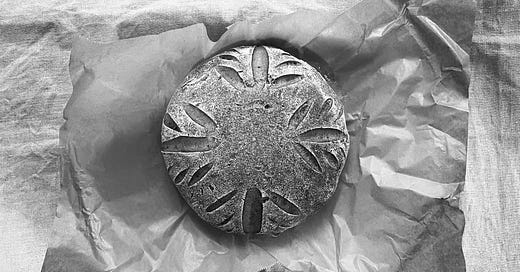


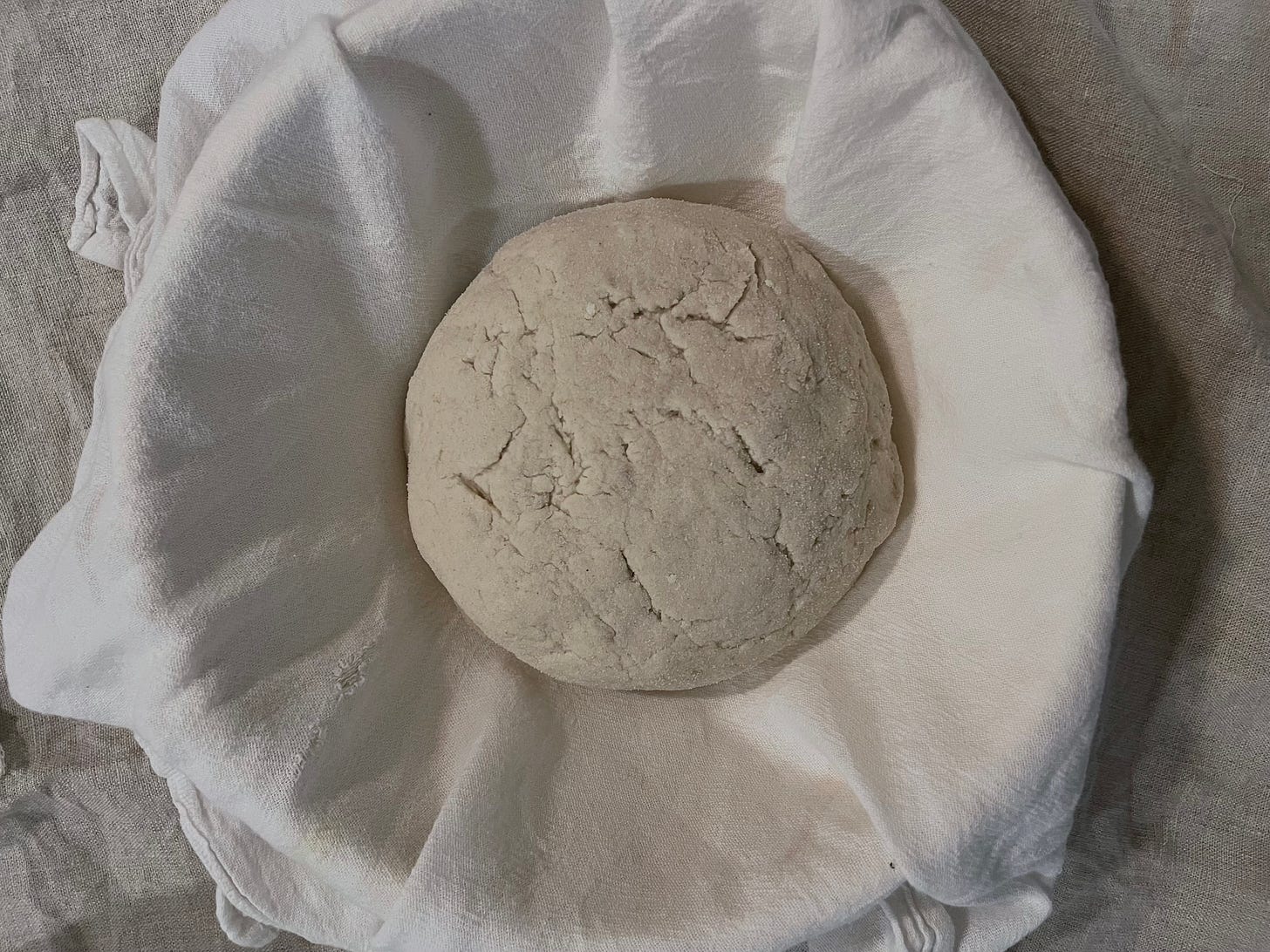
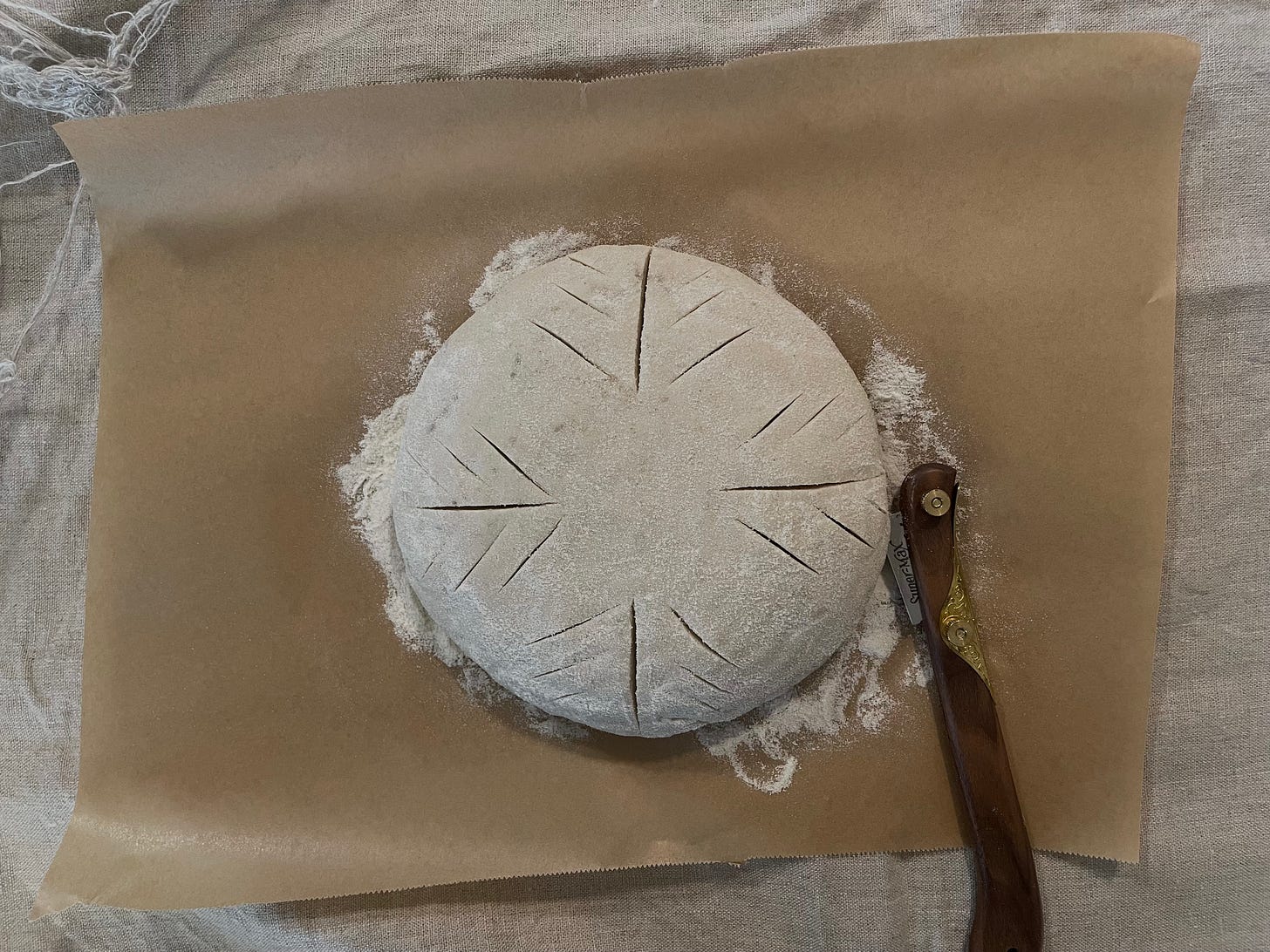


Thank you! This makes me a bit more brave to try baking sourdough